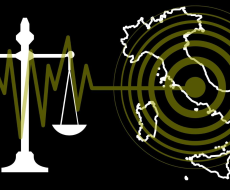
November 25, 2022
How the degree of seismic improvement is calculated
Generally, seismic improvement interventions increase the existing structural capacity to withstand project seismic actions. Following a seismic improvement, a percentage value is reached, which varies depending on the extent of the intervention performed, compared to the safety level dictated by the NTC 2018 for newly constructed buildings.

The measurement of the degree of improvement achieved is implemented by means of the coefficient ζE: ratio between the maximum seismic action that the structure can withstand and the maximum seismic action that would be used in the design of new construction. Usually this is defined based on the expected peak ground acceleration ag/g.
For improvement interventions, it is necessary that the coefficient ζE be increased by a value greater than 0.1 between the pre and post intervention situation.
The standard also prescribes a minimum value to be reached, equal to ζE ≥0.6 for buildings of use class III for school use and for those of use class IV.
In addition, in case of use of insulation systems, ζE must have a value equal to or greater than 1.0.
The same rules of seismic improvement also apply to the seismic retrofitting of warehouses, but with the requirement that the coefficient ζE reach values ≥ 1.0 and therefore that it would have a performance capacity equal to that of new construction.
In the event of changes in the intended use of the building, there is an exception, as this coefficient can reach values ≥ 0.8.
By knowing the differences between the two types of interventions, it is possible to choose the most appropriate solutions to adopt while being aware of the various levels of safety that can be achieved.
It is also essential to be able to evaluate the so-called Sismabonus tax incentive legislation, in order to fully access the benefits provided.






